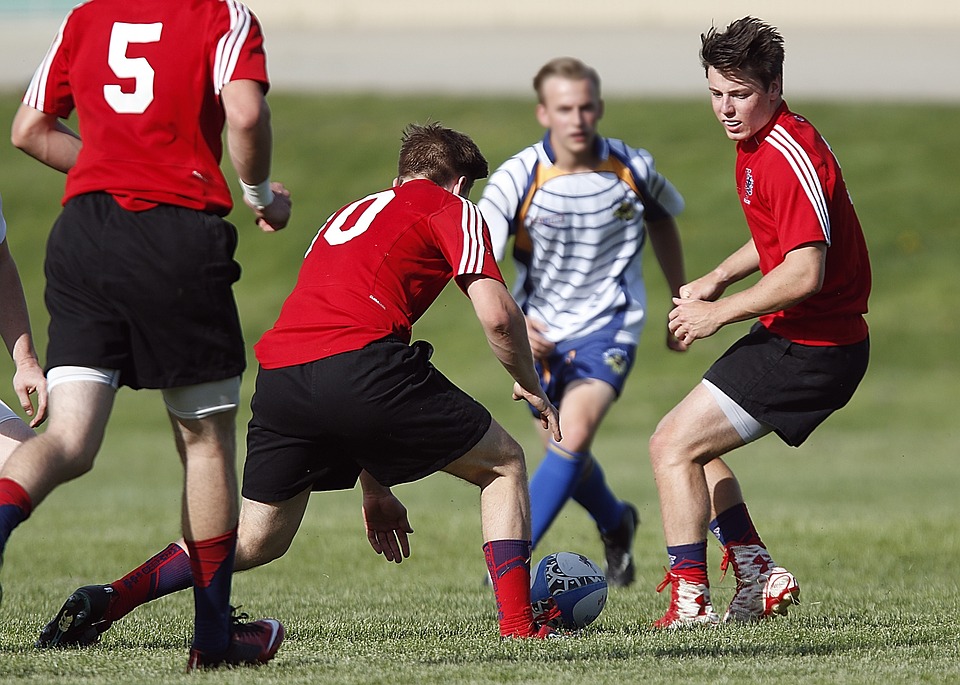It’s that time of year again - kids are heading back to school, as well as back to the track or field for sports games and practice. For many parents and children, school sports are a highlight in a very busy school year. Plus, participating in sports is a great way for kids and teens to get the amount of physical activity needed to stay healthy!
 It’s important to remember that with this extra activity, however, comes physical strain on the body - high school sports in particular can demand quite a lot of physical exertion from students. And there’s always the risk that children will sustain a sports injury by participating on their school’s team. John's Hopkins Medicine reports that about 30 million children and teens participate in some form of organized sports. They also report more than 3.5 million injuries each year.
It’s important to remember that with this extra activity, however, comes physical strain on the body - high school sports in particular can demand quite a lot of physical exertion from students. And there’s always the risk that children will sustain a sports injury by participating on their school’s team. John's Hopkins Medicine reports that about 30 million children and teens participate in some form of organized sports. They also report more than 3.5 million injuries each year.
Fortunately, there are ways parents can help their children stay healthy by avoiding and minimizing the risk of sport related injuries! To help avoid serious sports-related injuries, we advise parents to be aware of three key things:
- Risk. Naturally, each different sport is likely to carry specific risks. So when it comes to understanding your student’s risk on the field, a little research - or even a discussion with the school coach - will go a long way in addressing your student’s needs on the field. Some sports are more likely than others to carry the risk of a head injury, for example. Almost universally, however, parents and children will want to avoid ankle strains or sprains, which are exceptionally common. The good news? No matter what sport your child will play this season, injuries can be prevented! Which leads us to…
- Prevention. Different sports may carry different risks - but they also come with rules and gear that will help address these risks. To help prevent injuries on the field, we recommend that parents and children alike take a few basic precautions before heading out to play a school sport. For example, you can make sure your child is measured for properly fitted footwear. If a sneaker or cleat does not fit correctly, athletes are much more likely to injure themselves. And visiting a doctor for a physical can help your doctor rule out any pre-existing conditions that could contribute to their risk of getting injured. As a final example, parents should encourage your child to stretch before and after any physical activity and to follow their coach’s advice on the matter. Coaches will be able to recommend stretches for specific sports - but even basic stretching will go a long way in helping children avoid the most basic of sports pains!
- Treatment. Inevitably, a child playing a sport will probably need some sort of treatment for even a minor injury. Most athletes will experience soreness or minor aches and pains, which are commonplace in any sport. These minor symptoms can be treated at home with stretching, rest, and ice. However, parents should also help monitor for more serious problems; if your child begins to complain or show signs of an injury that involves obvious swelling, deformity or loss of normal movement or strength you should contact a physician as soon as possible. The longer these types of injuries are left untreated the more likely they are to become serious. And in an emergency, parents should never hesitate to take their children to an emergency room for quick treatment! Emergencies include suspected broken bones, severe blows to the head, any signs of concussion.
Sports are a great way for kids to interact with peers, have fun and engage in physical activity that will help them stay healthy. Still, to help ensure their sports keep them as healthy as possible, parents need to be aware of the risks that come with playing a physically intense sport. This will allow them to help their child avoid an injury, as well as be prepared in the event an injury does occur, during the coming months.

